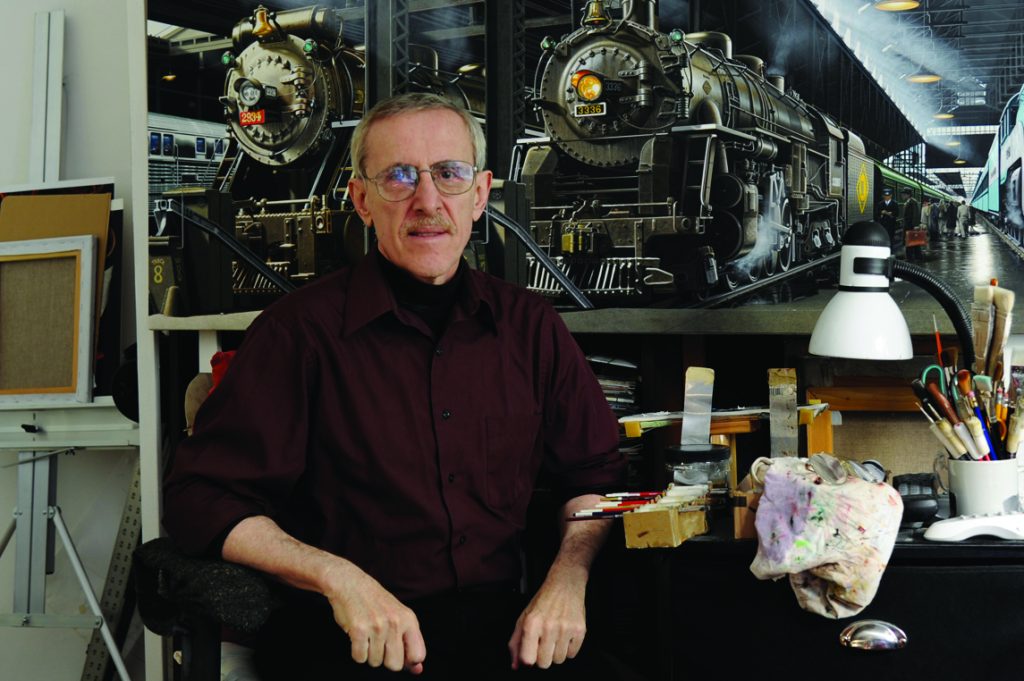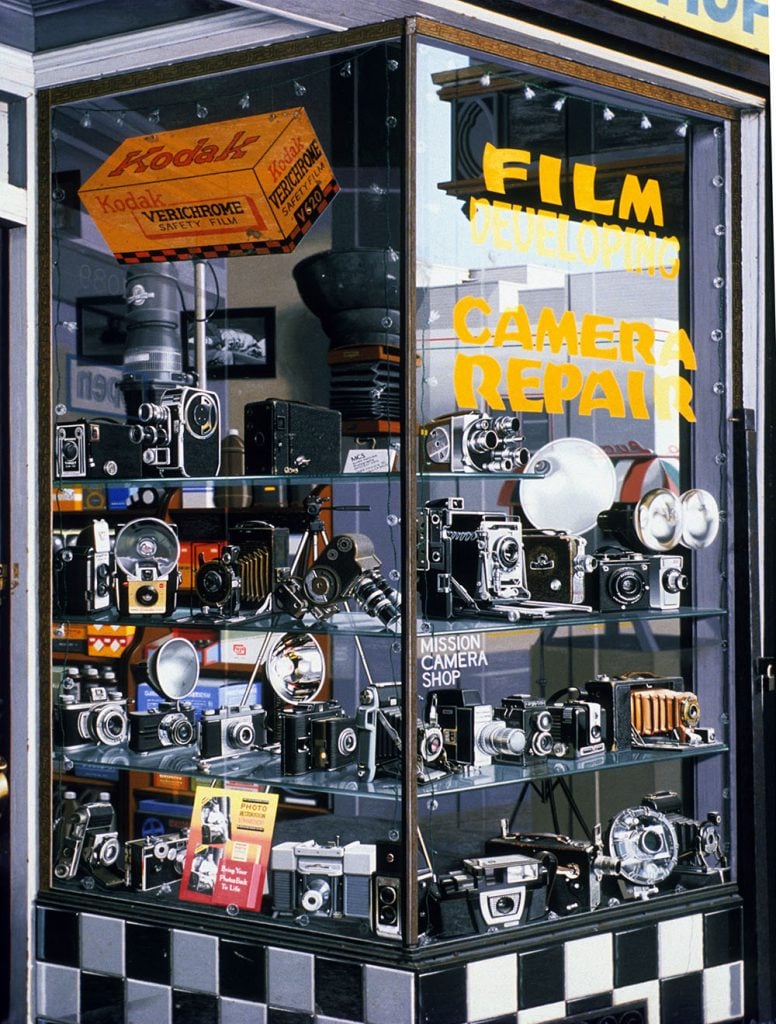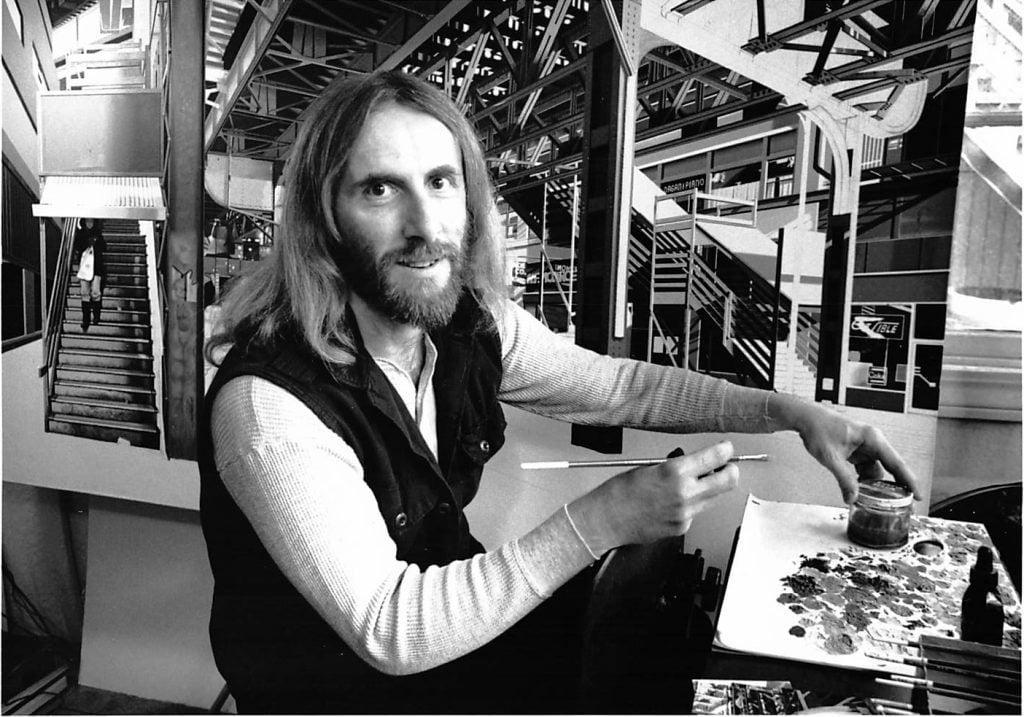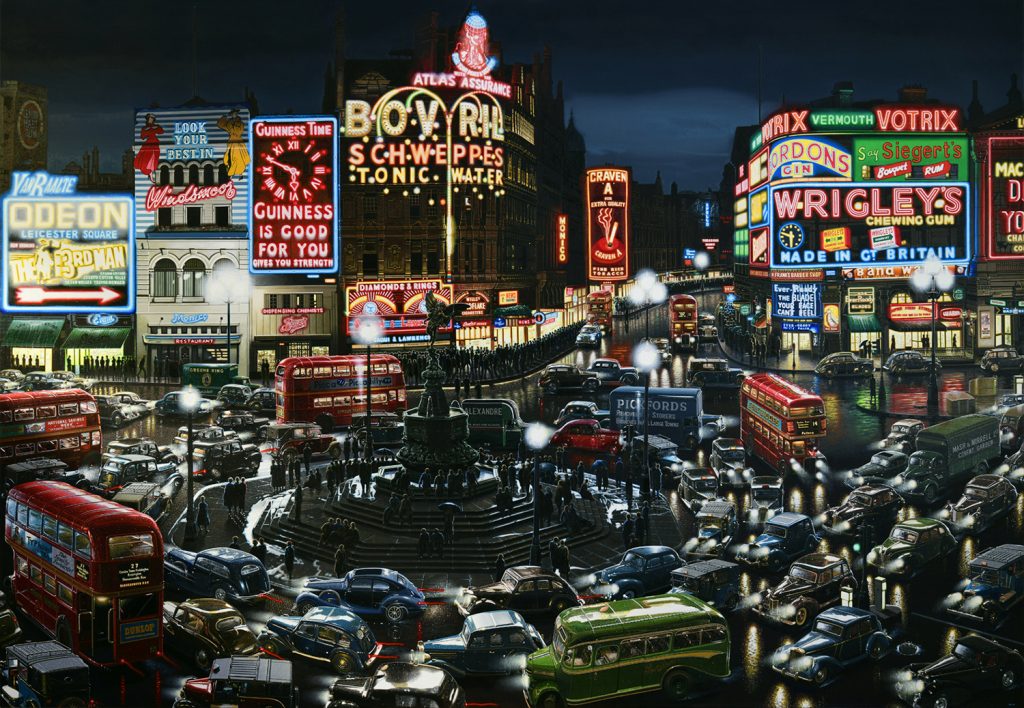Gallery Network
Louis K. Meisel Gallery Remembers Don Jacot, a Celebrated Second-Wave Photorealist Who Has Died at 72
Known for cityscapes and precise details, Don Jacot has been represented by the New York gallery since 1990.

Known for cityscapes and precise details, Don Jacot has been represented by the New York gallery since 1990.

Artnet Gallery Network

Don Jacot, a noted Photorealist artist known for his colorful paintings of vintage toys and precisely detailed vintage urban landscapes, has passed away, according to the artist’s representative, Louis K. Meisel Gallery in New York. He passed away in San Francisco in August of this year; his family shared news of his death with the gallery last month. Jacot was 72. The gallery is currently holding a virtual exhibition in remembrance of the artist.

Don Jacot, Camera Repair (1997). Courtesy of Louis K. Meisel Gallery.
Jacot was a significant figure in the second generation of Photorealist painters, bringing a singular combination of painterly precision and imaginative invention to his works. The artist first rose to prominence in the 1980s with cityscapes of the iconic factories and elevated train platforms of his hometown of Chicago. His early works, especially, were indebted to American Precisionist artists, including Charles Sheeler, whose works Jacot had admired at the Detroit Institute of Art.
In the 1990s he began a series of works focused on shop-window displays. Here, Jacot took cues from real displays but added objects of his choosing, planting vintage cameras, clocks, chrome coffee pots, and toasters among the wares.

Don Jacot in the 1990s. The artist began his career painting cityscapes of his native Chicago.
“I combined things from different eras, objects with similar functions or with nostalgic, whimsical, or symbolic value, and thereby reflected the culture around me. Beyond that I wanted to share my fascination with the forms of the things themselves, their colors and surfaces, and their appearances under different lighting, angles, or lens lengths,” Jacot explained of the series. The largest works could take as long as a year to complete.
From that body of work, Jacot homed in on painting the individual objects within these windows—vintage toys in particular—shifting into a smaller register that allowed him to articulate the unique aspects of the toys themselves in a series called “Toy Stories.” Later, Jacot would create a group of six-foot paintings, in which the toys are blown up to a towering scale.

Don Jacot, Atomic Robot Men (1998). Courtesy of Louis K. Meisel Gallery.
At the end of his career the artist returned to painting cityscapes, often relying on vintage photographs as his source material. Imbued with a sense of nostalgia, the paintings depicted the heydays of metropolitan centers like Broadway or Times Square in the 1930s and 1940s. At times he constructed elaborate models of the vintage marquees out of black cardboard and used toy cars and buses as traffic for the basis of his works.

Don Jacot, Piccadilly Circus, 1949 (2020). Courtesy of Louis K. Meisel Gallery.
“Don Jacot was one of the leading Photorealists of the all-important second generation of Photorealist painters, whose work helped to cement the achievement of the artists of this genre. His work displays the highest level of realist and representational painting. He was a prolific and productive artist throughout his life and passed away at his easel, doing what he loved to do,” dealer Louis Meisel, wrote. Meisel has represented Jacot since 1990.
The artist is survived by his brothers Robert and Charles. He was preceded in death by his parents, N. Edgard and Ruth Elizabeth Jacot, and by his siblings Nancy and William.
